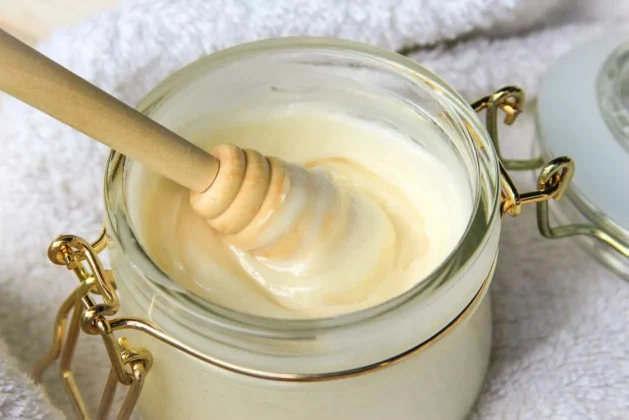In today’s global market, honey is no longer the simple pantry staple it once was. While it’s widely known for its health benefits and natural sweetness, not all honey is created equal. Unfortunately, many supermarket shelves are lined with products that are diluted, overly processed, or entirely fake. For consumers who care about quality, nutrition, and authenticity, knowing how to choose real honey is more important than ever.
Whether you drizzle it over toast, stir it into tea, or use it for wellness remedies, the quality of your honey matters. With increasing cases of mislabeled or counterfeit products entering the market, it’s time to learn how to spot the real deal and avoid the sugar-filled imposters.
Understanding Honey Types: What’s Really Out There?
Before diving into how to recognize pure honey, it’s essential to understand the basic types you may encounter:
-
Raw Honey is unheated, unpasteurized, and often unfiltered, preserving beneficial enzymes and nutrients.
-
Pasteurized Honey has been heat-treated to extend shelf life, which can destroy enzymes and antioxidants.
-
Organic Honey is made from nectar collected from pesticide-free flowers.
-
Monofloral vs. Multifloral Honey refers to whether the nectar comes from one main plant (like clover or manuka) or a mix of sources.
Among small-batch producers, Sweet bee stands out for maintaining high standards and delivering raw honey with traceable origins. Supporting such local brands often ensures you’re getting an unadulterated product.
Key Signs of Authentic Honey
Real honey is a product of nature and carries distinct characteristics that set it apart from imitations. Here are several signs to look out for:
-
Texture & Consistency: Pure honey has a thick, syrupy feel and pours slowly. It’s not runny or watery.
-
Taste: Natural honey has a complex, floral flavor. It shouldn’t taste like corn syrup or overly sweetened water.
-
Aroma: A faint floral or earthy scent is common in raw honey heavily processed varieties tend to have little or no aroma.
-
Crystallization: Over time, real honey often crystallizes. This natural process is a good sign and doesn’t indicate spoilage.
Spotting the Red Flags
When shopping for honey, keep an eye out for red flags that may indicate you’re buying a subpar or adulterated product:
-
Ingredients List: If the label includes glucose, fructose, high-fructose corn syrup, or other additives, it’s not pure honey.
-
Suspiciously Low Price: Quality honey is more expensive to produce. Ultra-cheap honey may come at the cost of quality and authenticity.
-
Overly Clear Appearance: While filtered honey may look attractive, a completely transparent and thin product is likely highly processed.
-
Lack of Transparency: If the packaging doesn’t clearly state the source, region, or beekeeper, think twice before buying.
Simple At-Home Tests for Quality
While not all tests are conclusive, a few household tricks can help indicate whether your honey is likely pure:
-
Water Test: Place a spoonful of honey in a glass of water. Pure honey will settle at the bottom and not dissolve quickly.
-
Thumb Test: Dab honey on your thumb if it spreads or runs off quickly, it might be impure.
-
Flame Test: Dip a cotton wick in the honey and try lighting it. Pure honey will often burn cleanly, while adulterated honey will not.
-
Crystallization Over Time: If your honey never crystallizes after months, it may contain additives or excess moisture.
Remember, these are not foolproof but they do provide useful indicators when used alongside other methods.
Label Literacy: Read Before You Buy
Labels tell a story. A reliable brand will clearly list the honey’s floral source, country of origin, and whether it’s raw or organic. Look for designations like:
-
“Raw” – indicates it hasn’t been heat-treated.
-
“Unfiltered” – means it retains natural pollen and enzymes.
-
“True Source Certified” – ensures traceability from hive to bottle.
Don’t fall for marketing terms like “pure” unless it’s backed by reliable certifications.
Why Local and Small-Batch Brands Are Often Better
Mass-market honey is often blended from multiple countries, heat-treated, and filtered to meet appearance expectations. In contrast, small-batch and local producers typically focus on quality over quantity. These honeys are often:
-
Fresher: Because they’re made in small batches and sold locally
-
More Nutrient-Rich: Since they avoid excessive processing
-
Eco-Friendly: They support pollinator health and regional biodiversity
Midway through your honey journey, you’ll realize that trusted producers like Sweet bees offer products that maintain both taste and integrity.
Final Thoughts: Choosing with Confidence
Choosing quality honey doesn’t have to be complicated, but it does require a little awareness. Educate yourself, learn what labels mean, and don’t be afraid to pay a bit more for something that’s both better for your body and the planet. By sticking with reliable producers and doing simple checks at home, you can enjoy all the natural benefits that real honey has to offer without the worry.


Leave a comment